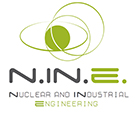FOREWORD
System Thermal-Hydraulics Codes began to be developed towards the end of the 1960's as a response to the requirements, or knowledge targets, put by the Regulatory Body in the United States.
The huge investments in nuclear reactor safety research and developments, including Verification and Validation, brought to the nuclear community the availability of the mature computational tools towards the end of 1990's, when those codes were classified as Best Estimate.
Nowadays SYS-TH codes application cannot be avoided even if new tools such as Computational Fluid Dynamics or Computational Multi Fluid Dynamics codes appeared at the beginning of the 2000s. Notwithstanding the reduced effort and budget with respect to the past, research and development to improve SYS-TH Codes have never stopped.
With this in mind, the main motivation for starting the FONESYS Project in 2010 was to bring technical evidence addressing possible disbelief in SYS-TH codes or criticism against them and to strengthen the current technology.
The motivation is to bring arguments against over-criticism and at the same time to improve the codes simulation capabilities, and to clearly identify the future roles of SYS-TH codes and CFD codes in reactor thermal-hydraulic studies.
Another principal motivation was to form a network of experts and, code developers that can challenge future problems that can possibly rise during the development and use of the SYS-TH codes.
The FONESYS network has already been working since a decade within a framework consistent with the standards of international institutions. Experts in code development have found interest in the various activities. Advanced modeling were discussed and compared, old issues as Two Phase Critical Flow and Critical Heat Flux prediction were revisited, benchmarking was done, documents were published or are still being elaborated, bilateral collaborations were initiated.
With similar motivations, GRNSPG-UNIPI successfully established in 2012 a network in the domain of thermal-hydraulic experiments, SILENCE.










